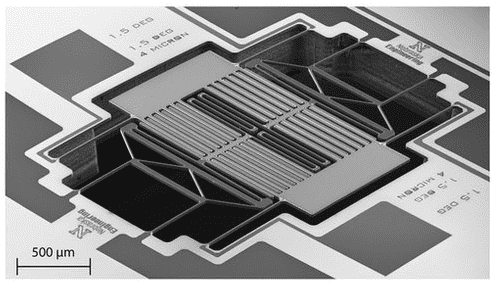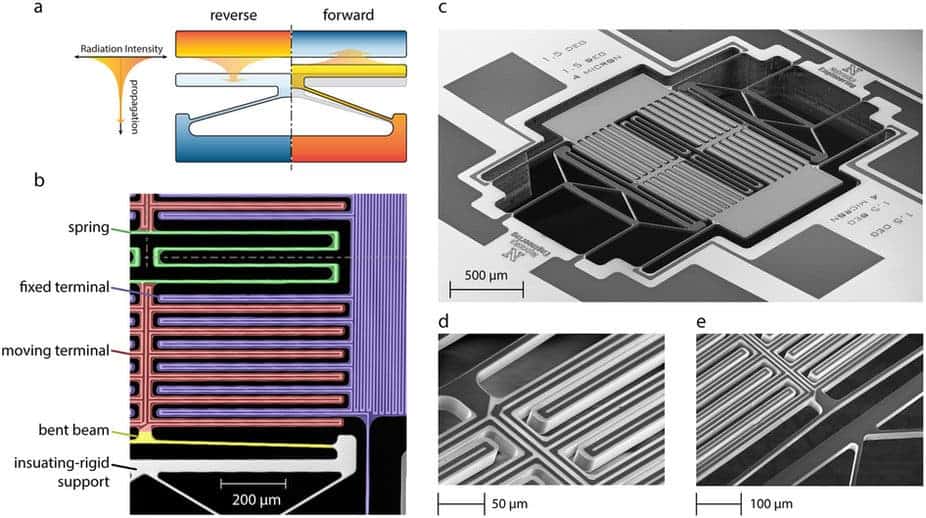A research team from the University of Nebraska-Lincoln College of Engineering has developed the first bit required for heat-fueled computers: the thermal diode.

Ever since humanity has put together the first electronic computer, we’ve been locked in an endless battle to keep these things cool enough so they won’t fry and shut down. A struggle made all too personal as your phone is cooking in your hand after a particularly lengthy call or game. Is this the price we have to pay for modern communication and computation? Are we doomed to a future choke-full of fans and thermal conductive paste, anxiously blowing into PC cases or wailing at the sight of the on-screen thermometer?
Well, maybe not
Sidy Ndao, assistant professor of mechanical and materials engineering, and Mahmoud Elzouka, a graduate student in mechanical and materials engineering, from the University of Nebraska-Lincoln College of Engineering, developed a thermal diode that may allow computers to harness heat as an alternate energy source and keep on functioning even in ultra-high temperatures. The duo says they got the idea of creating a nano-thermal-mechanical device, or thermal diode, after struggling with the question of how to better cool down computers. Instead of trying to dissipate heat (essentially wasting energy) like before, they decided to try and harness it for the computer’s system.
“If you think about it, whatever you do with electricity you should (also) be able to do with heat, because they are similar in many ways,” Ndao said. “In principle, they are both energy carriers. If you could control heat, you could use it to do computing and avoid the problem of overheating.”

Image credits Mahmoud Elzouka & Sidy Ndao, (2017), Scientific Reports.
Their NanoThermoMechanical rectifier (NTMR) uses heat exclusively, meaning it could be powered by waste heat (which the authors note equals about 60% of the total domestic consumption in the US) so would “obviously cut down on waste and the cost of energy,” Ndao points out. The system is made up of two metallic plates, one fixed (upper) and one mobile (lower plate), called terminals, and can be constructed “using conventional microfabrication techniques”. Near-field thermal radiation processes carry the heat between the two plates, and their intensity decreases exponentially with distance between the terminals. So, the wider the gap between them, the lower the heat transfer rate becomes (negative bias). When the expandable structure pushes the mobile terminal up, the distance closes, increasing the rate of heat transfer (positive bias).
The mobile terminal rests on a thermally-expandable structure, which activates when the lower plate is heated and pushes the two terminals close to each other. If the upper plate is heated, the thermal radiation processes which carry heat between two close-by objects isn’t strong enough to heat the expandable structure, so there is no motion — allowing the system to act like a diode.
Hot stuff

Image credits Karl Vogel / University of Nebraska-Lincoln Engineering.
It’s not the first time scientists toy around with heat-based systems for computers, but “the technologies proposed so far operate at cryogenic or room temperatures.” By contrast, the team’s prototype device still functions at around 630 degrees F (332 C), which is a lot more than my rig can take without melting and/or exploding. Ndao says that in the future, he expects to take the system’s limit to some ridiculous temperatures — even as high as 1,300 F (704 C).
The only major gripe I have with this system right now is that electro-mechanical computers tend to be really slow compared to pure electrical ones — that’s why we switched to electronic computers in the first place. Well, that and the fact that mechanical computers have a lot of parts in motion which tend to break. So we’ll have to wait and see just how fast this thing can be. But if they can pull it off, the thermal computer could comfortably compute in places where regular systems would boil to a halt.
Ndao said the team is trying to make the device more efficient and faster. Elzouka said that although they’ve filed for a patent already, there is still work to be done to improve the diode and its performance.
“If we can achieve high efficiency, show that we can do computations and run a logic system experimentally, then we can have a proof-of-concept,” Elzouka said. “(That) is when we can think about the future.”
“We want to to create the world’s first thermal computer,” Ndao said. “Hopefully one day, it will be used to unlock the mysteries of outer space, explore and harvest our own planet’s deep-beneath-the-surface geology, and harness waste heat for more efficient-energy utilization.”
The paper “High Temperature Near-Field NanoThermoMechanical Rectification” has been published in the journal Scientific Reports.


